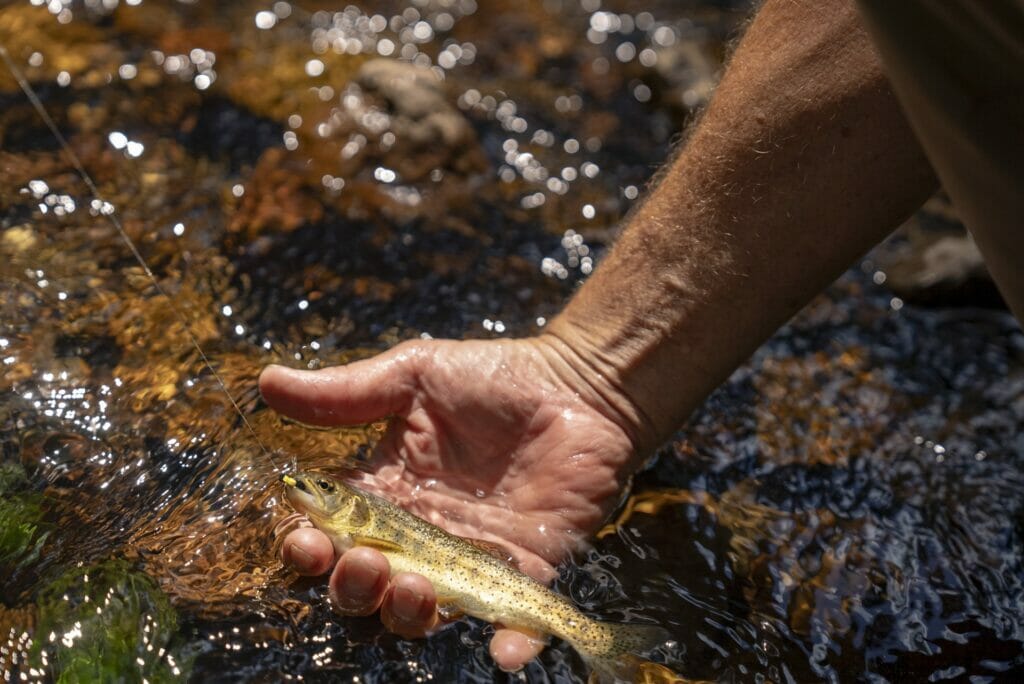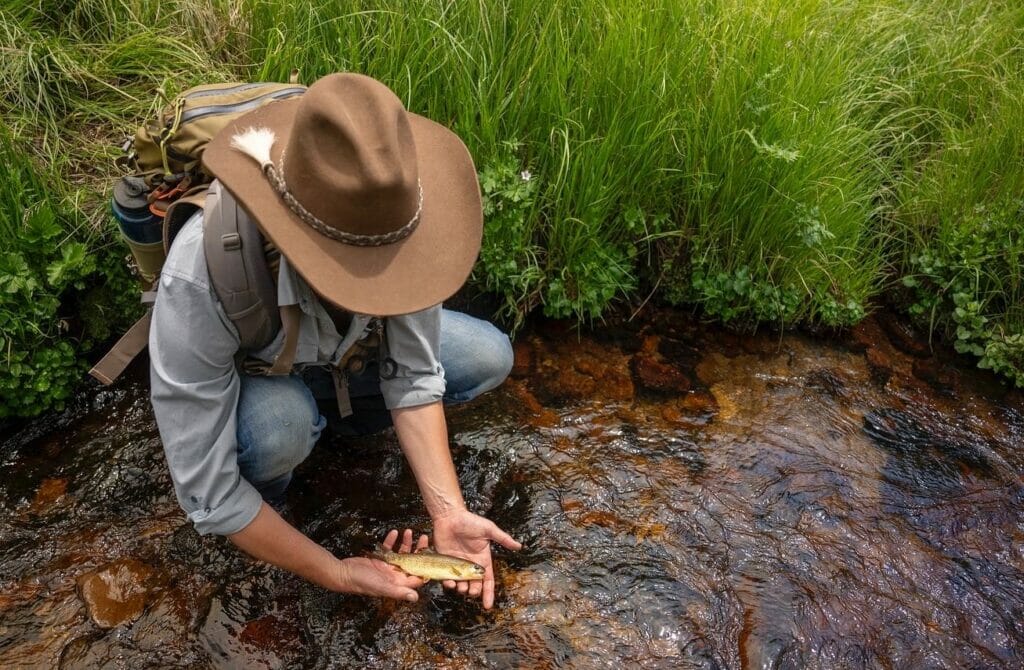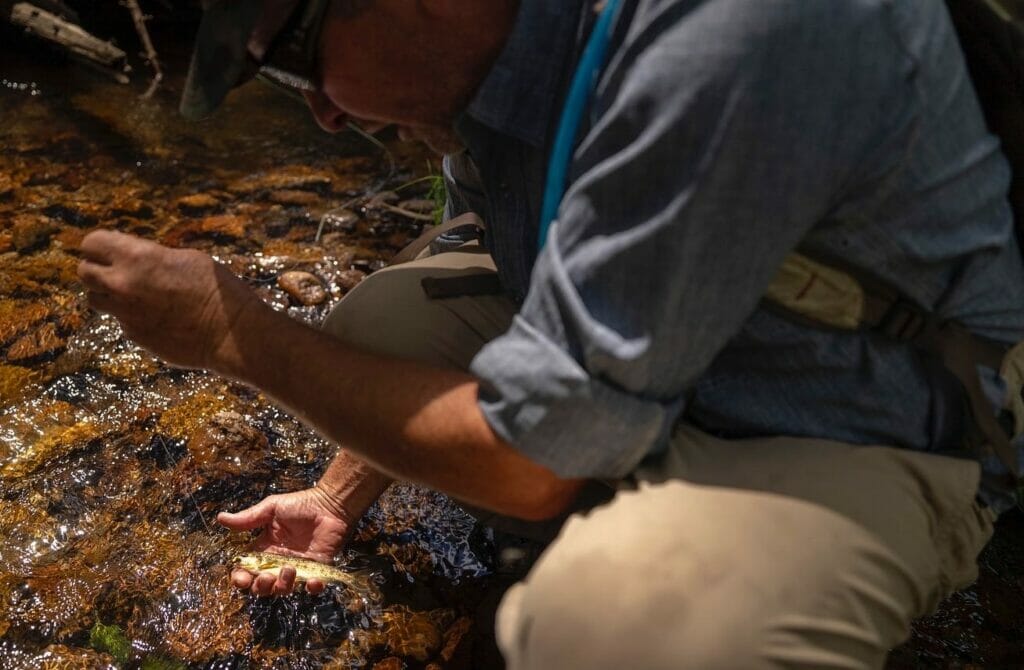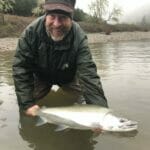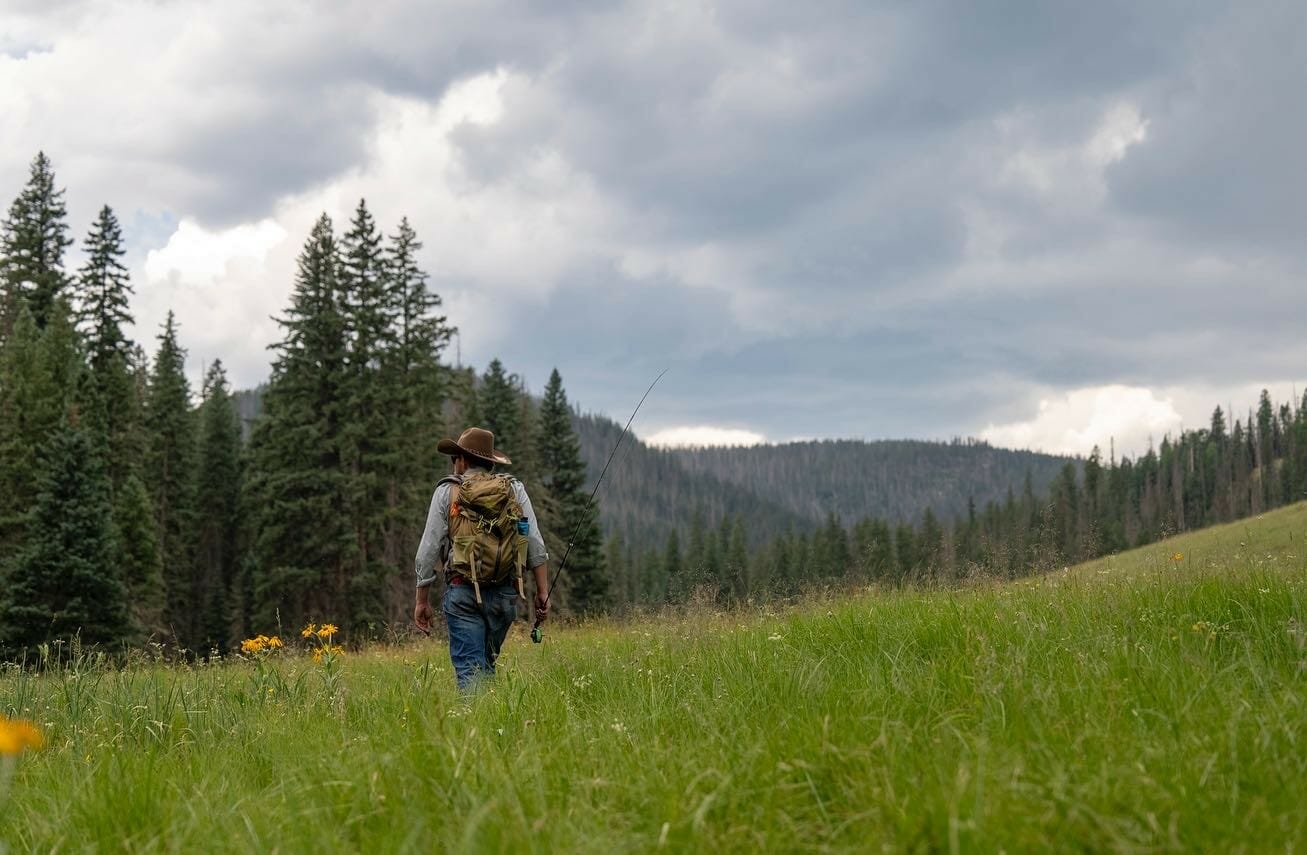It is July in Arizona, and the heat lies out there like some hulking great beast, a monster with an appetite that seems always unsated.
It swallows all when it can, but we humans move behind glass, the bake held at bay in little containers of refrigeration. A plane, the rampway from the plane to the terminal, the train to the rental lot, the rental car. Bubble to bubble to bubble, the oven outside, the humans in air conditioning constantly fueled by fossil fuel. Which in turn fuels the heat. It’s an irony that is not wasted.
It is the black of night and the thermometer on the rental says 101, midnight and 101. Could be a verse from a bluegrass song.
But we leave the city behind us, Josh and I—photographer and writer on assignment for TROUT—and as we climb, the temperature falls. One hour north on the Beeline Highway up in Payson it’s in the high 80s and an hour north of that up in the Mogollon Rim country—Zane Grey country—it’s in the low 80s and by three in the morning at our destination beneath the ponderosas, it’s in the high 50s.
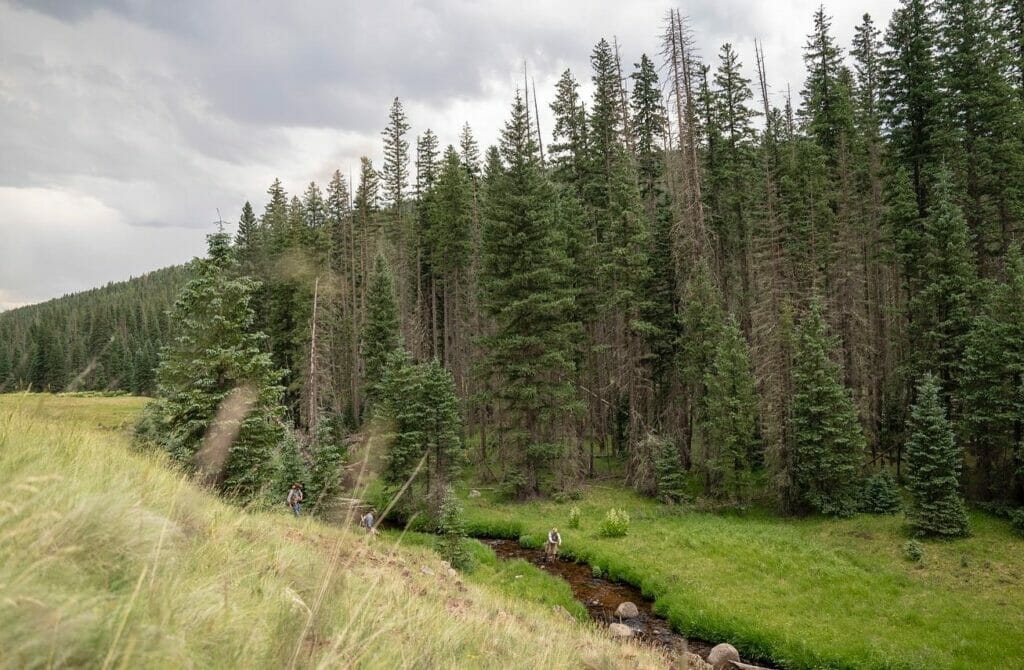
This is Apacheria, the heart of some of the most unlikely country in the desert Southwest, that is if you think of Arizona and New Mexico as desert and cactus and road runners and coyotes. But if you know the country a little bit, you know that these neighbor-brother states are among the most diverse in the entire country, places of raw, tough beauty and high stunning handsomeness that have climates and life zones across the spectrum.
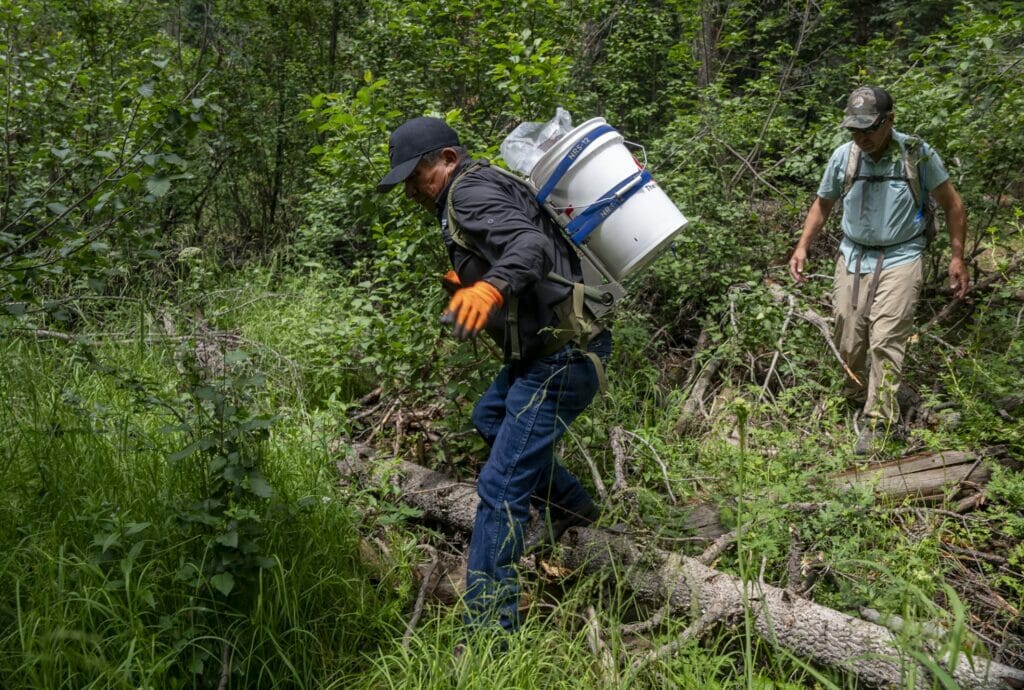
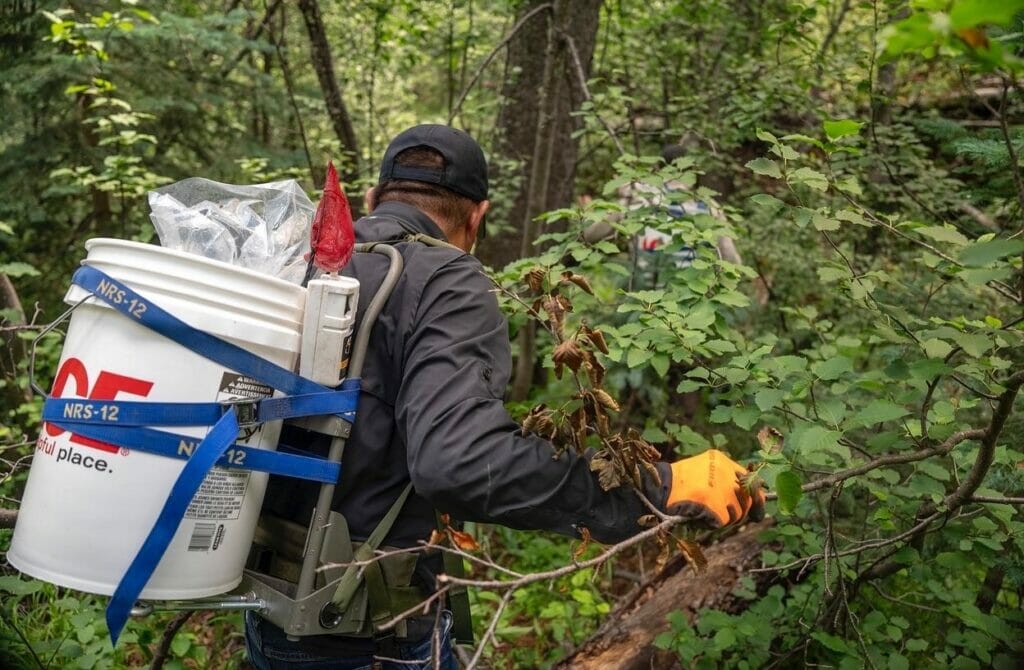
This part of Arizona, the White Mountains, is ponderosa pine and aspen, coldwater streams building in high mountain holds, rushing through deep Englemann spruce forests, into meadows lined with skunk cabbage and wildflowers everywhere. July in this Arizona looks a lot like July in my Montana mountains. Maybe even better. The mosquitoes are none. The hummingbirds are many as are the elk, which are both more plentiful than in my part of Montana but also much bigger; huge bulls trot across the road in the headlights of our car. The Mexican food is almost universally good which is something I cannot say about my home state, not by a long shot. But if I were blindfolded and dropped into this country and asked to name where I am, I might guess Montana’s Big Belts or Colorado’s Lone Cone country or Wyoming’s Big Horns.
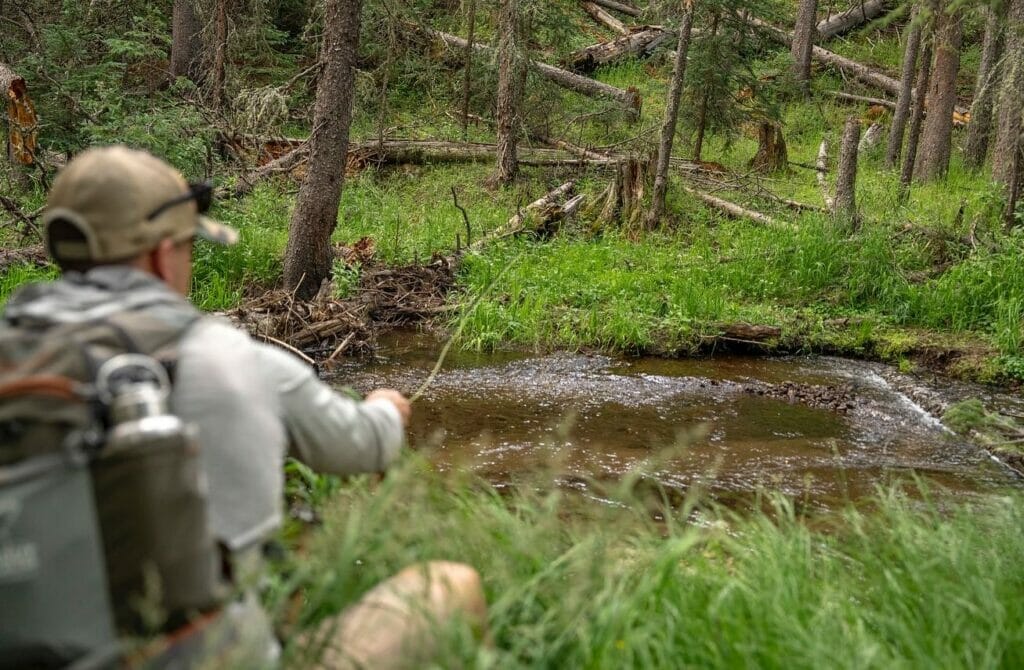
We are here for the Apache trout. To fish for them, certainly, but also to see them in their natal waters, this rare trout that lives in high streams of the White Mountain Apache Reservation and eastward on the Apache-Sitgreaves National Forest. We are here to understand how this gold-splashed trout has bounced from nearly disappearing entirely to being a candidate for delisting from the Endangered Species list. This week, as rufous and broad-tailed hummingbirds, fighter-jet the sky, we walk into Apacheria unblindfolded with open ears, eyes and hearts.
